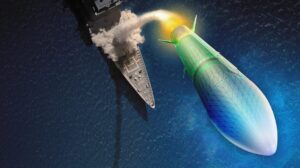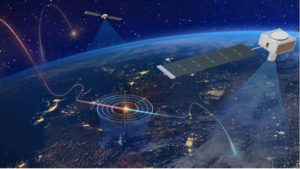The Missile Defense Agency (MDA) last week awarded Northrop Grumman [NOC] and
Raytheon Technologies [RTX] additional firm-fixed-price modifications to extend their work refining concepts for hypersonic missile defense, called the Glide Phase Interceptor (GPI), through March 2024.
The latest modification again boosts the total value of the companies’ contracts by $29 million to $156 million total for Northrop Grumman and by $18 million to $153 million total for Raytheon. The awards also extend the period of performance from April 28 to March 12, 2024.
An April 28 contract notification says the companies will “continue to develop and refine their Glide Phase Intercept (GPI) concept during the technology development phase.”
MDA initially awarded Raytheon, Northrop Grumman and Lockheed Martin [LMT] $19 million to $21 million contracts to develop and refine GPI hypersonic missile defense interceptors (Defense Daily, Nov. 22, 2021).

Then last year, MDA down-selected to Northrop Grumman and Raytheon to continue refining and developing their GPI concepts into 2023 (Defense Daily, June 24, 2022).
Previously, last November, MDA awarded the two companies modifications to continue the work through July 2023, boosting the total values to $92 million for Raytheon and $78 million for Northrop Grumman (Defense Daily, Nov. 16, 2022).
In March, MDA director Vice Adm. Jon Hill told reporters the Defense Department is exploring cooperative development and production of GPI with Japan, similar to the current work on Standard Missile-3 Block IIA interceptors (Defense Daily, March 16).

Hill also said he did not know when the final down-select on GPI between Northrop Grumman and Raytheon will occur, but it depends on how they both mature technically.
The agency expects to develop GPI in phases that will add increased capabilities over time, while previous comments indicated initial fielding expected in the mid-late 2020s.
The prototype interceptors are planned to fit into the current Aegis Ballistic Missile Defense System and fired from standard Vertical Launch System cells on U.S. Navy destroyers.